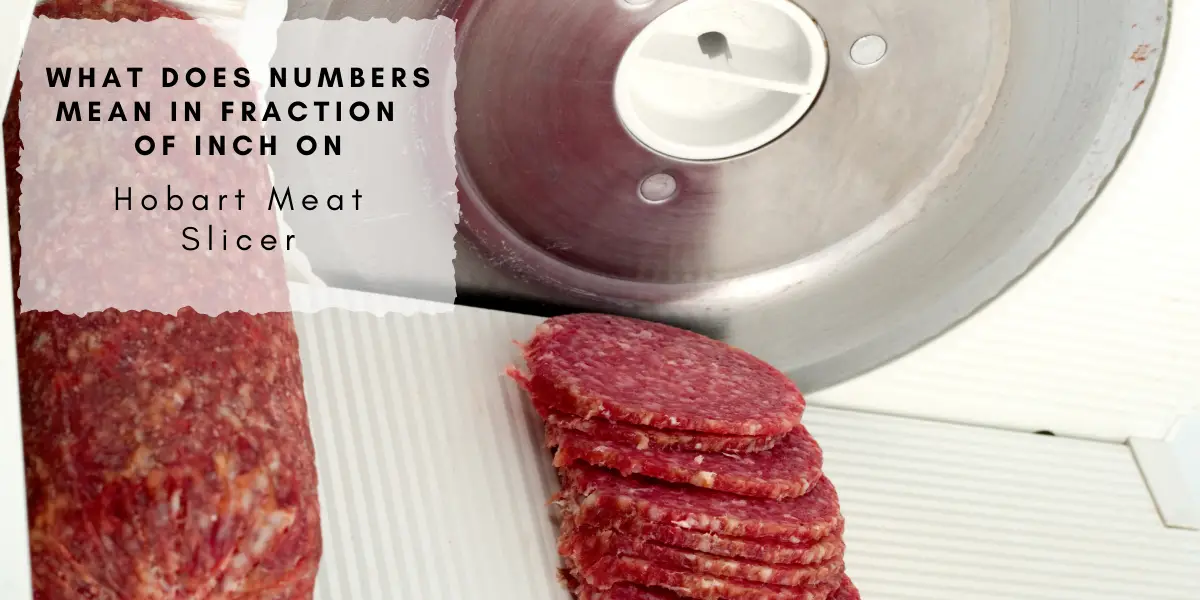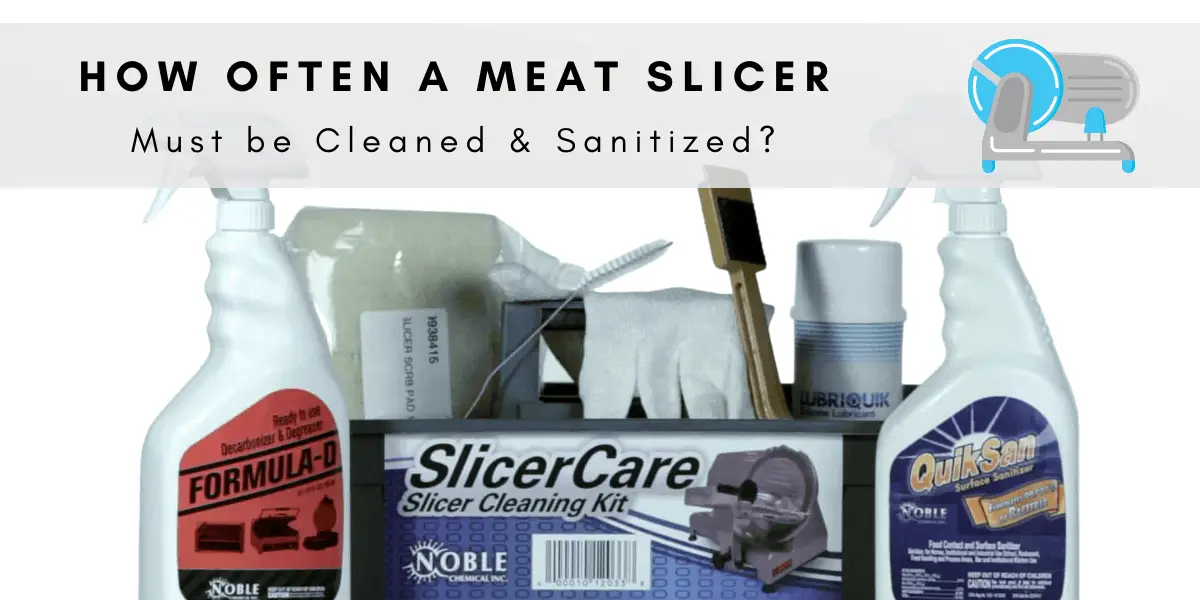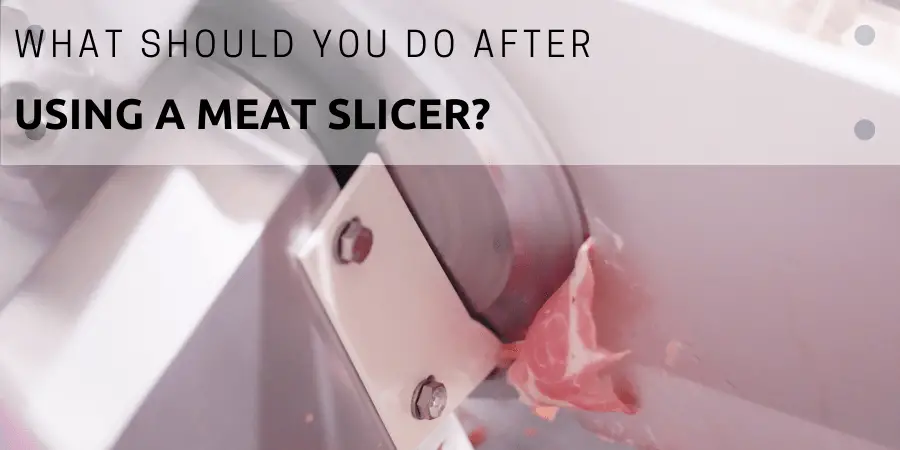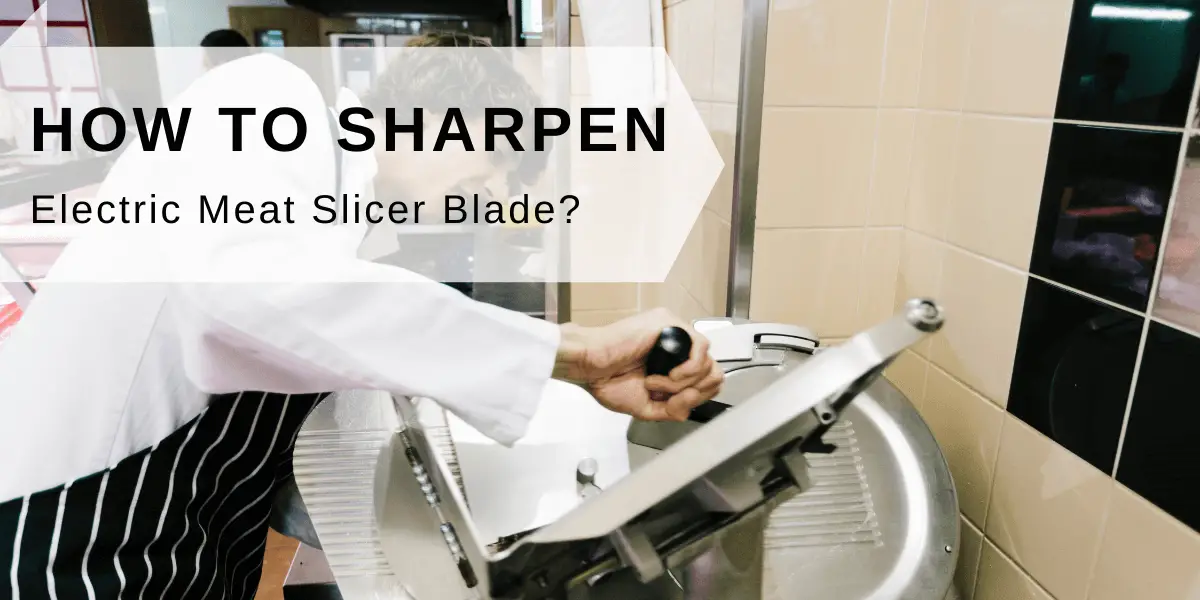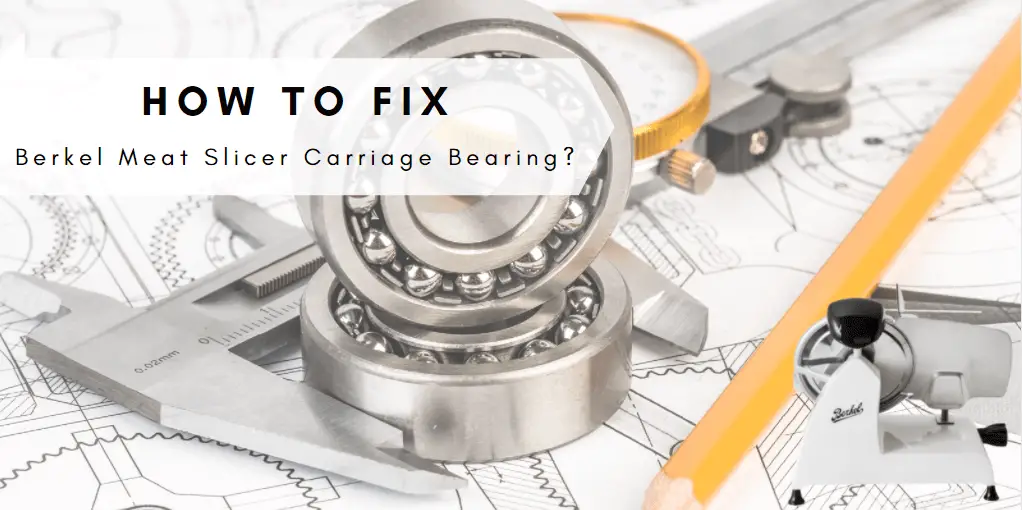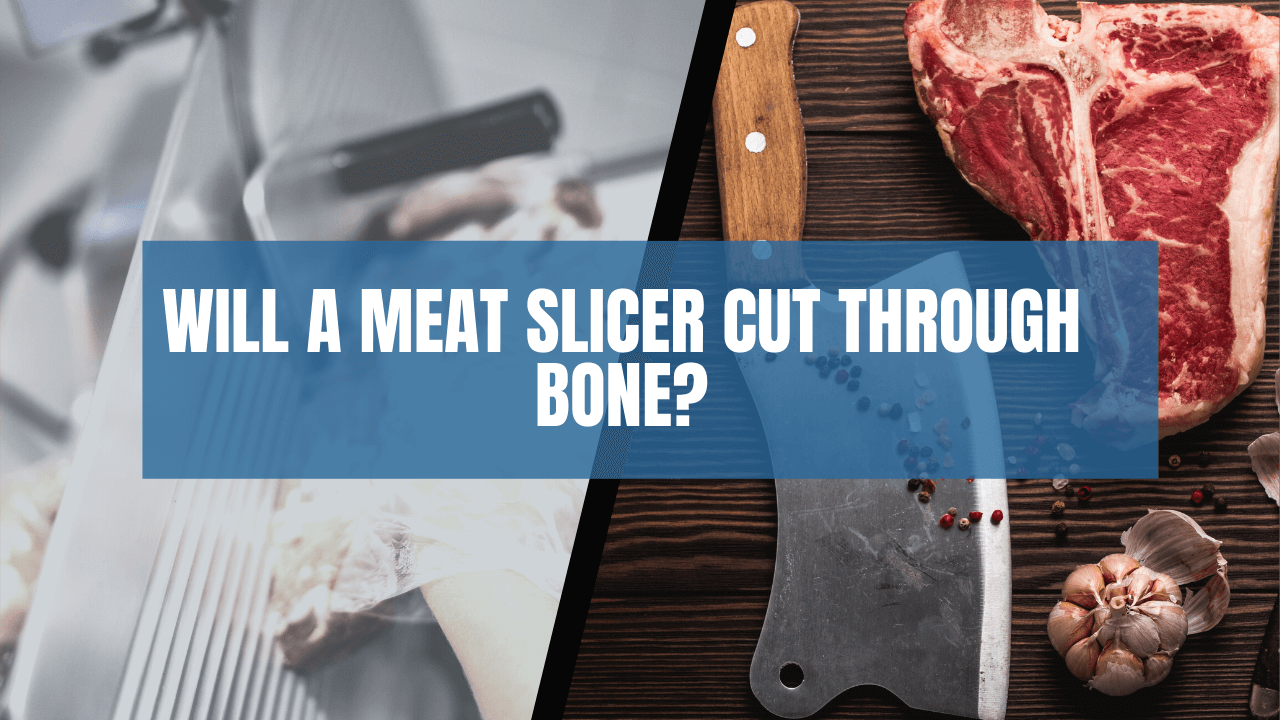When cutting meat, having the right blade type can make all the difference. Standard blades for cutting meat include a boning, carving, slicing, and clever knife. Different blades are designed to cut through different types of meat, and choosing the right one can help you achieve your dish’s desired texture and appearance.
Types Of Meat Cutting Blades
A chef’s knife is an all-purpose knife that can be used for various tasks in the kitchen, including cutting meat. Typically, chef’s knives have a broad and tapered blade between 8 and 10 inches long. The versatility of a chef’s knife makes it suitable for slicing, dicing, and chopping different cuts of meat and performing other kitchen tasks.
Boning Knife
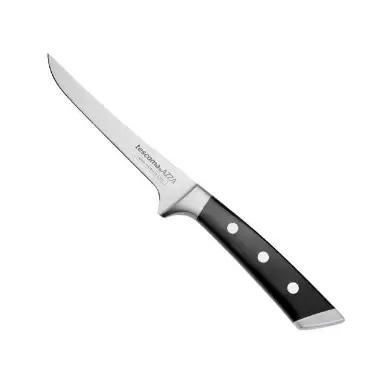
As the name suggests, a boning knife separates meat from bones. It features a thin, flexible, sharp blade that is usually 5 to 7 inches long. The flexibility of the blade allows it to bend and maneuver around bones, making it easier to remove meat without wasting any of the tender, juicy flesh.
Carving Knife
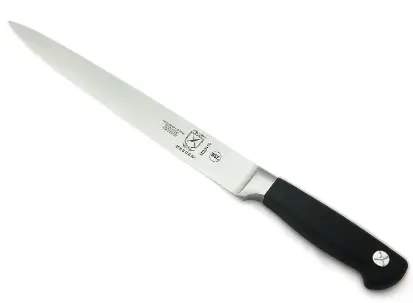
A carving knife is perfect for cutting thin, uniform slices of cooked meat, like roasted turkey, prime rib, or ham. These knives have a long, narrow, and slightly flexible blade, typically between 8 and 15 inches long. The thin blade ensures you can make precise cuts without tearing the meat, while the length allows for smooth, even slices.
Slicing Knife
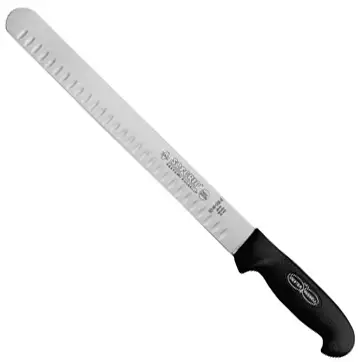
Like a carving knife, a slicing knife is designed for cutting thin slices of cooked meats, but it can also be used to cut large fruits and vegetables. Slicing knives have long, narrow, and slightly flexible blade that is usually between 10 and 14 inches long. The blade may also be serrated, which helps reduce friction and makes it easier to cut through the meat.
Cleaver
A cleaver is a heavy, broad-bladed knife ideal for cutting through thick cuts of meat and bones. There are two main types of cleavers:
- Chinese Cleaver: A Chinese cleaver has a rectangular blade great for chopping, slicing, and dicing various ingredients, including meat and vegetables. The blade is typically between 7 and 9 inches long, and the knife’s weight helps generate the force necessary to cut through bones.
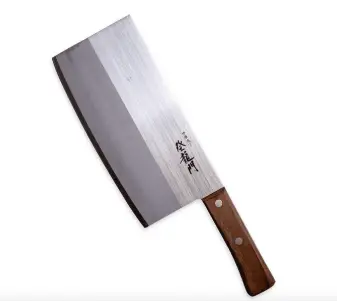
Chinese Chef’s Cleavers - Western Cleaver: A Western cleaver has a more robust, wedge-shaped blade for cutting through large bones and cartilage. The blade is usually between 6 and 8 inches long, and the thickness of the blade ensures that it can handle the pressure of cutting through tough materials without bending or breaking.
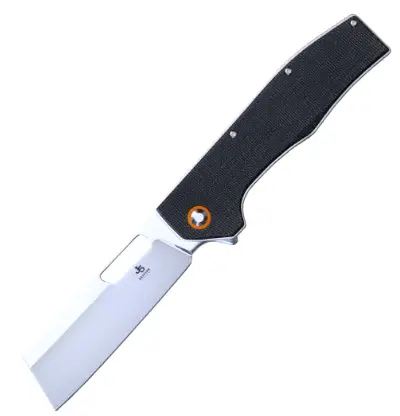
Western Chef Knife Cleaver
Blade Materials
The material of a knife blade plays a significant role in its performance, durability, and ease of maintenance. Let’s look at the most common blade materials used for meat-cutting knives.
- Stainless Steel: Stainless steel is popular for kitchen knives due to its corrosion resistance and low maintenance requirements. It’s an alloy made of iron, chromium, and other elements, making it durable and able to retain a sharp edge for a long time. However, stainless steel blades may require more frequent sharpening than other materials.
- High Carbon Steel: High-carbon steel knives are known for their sharpness and edge retention. These blades are made of steel with a higher carbon content, which results in a harder and stronger knife. Although they can be more susceptible to corrosion than stainless steel, proper care, and maintenance can help prevent rust and prolong the knife’s lifespan.
- Ceramic: Ceramic knives are made from zirconium dioxide, a material known for its extreme hardness and durability. These knives are lightweight, incredibly sharp, and can maintain their edge for a long without frequent sharpening. However, ceramic blades can be brittle and prone to chipping or breaking if dropped or used on hard surfaces.
Choosing The Right Blade For Your Needs
When selecting a knife for cutting meat, consider the type of meat and the specific tasks you’ll be performing. For example, if you frequently debone meats, a boning knife would be a valuable addition to your kitchen arsenal. A carving or slicing knife would be ideal if you often slice large cuts of cooked meat. Consider the blade material and its pros and cons before deciding.
The Importance Of Using The Right Blade For Cutting Meat
Meat preparation is a crucial aspect of cooking, and using the right tools makes all the difference in the outcome. A high-quality, sharp knife is one of the most essential tools for cutting meat. This article will discuss the importance of using the right blade for cutting meat, highlighting the benefits and potential risks of using an improper blade. So, let’s delve into why using the correct blade matters.
Benefits Of Using The Right Blade
- Precision and Control: Using the appropriate blade for cutting meat allows for greater precision and control. Each blade is designed to excel at specific tasks, making cutting through different textures and densities easier. For example, a boning knife provides flexibility for removing meat from bones, while a carving knife ensures an even and smooth slicing of cooked meats.
- Efficiency and Time-Saving: Using the right blade can significantly improve your efficiency in the kitchen. Using a knife designed for a particular task, you can complete the job faster and with less effort. This saves time and reduces the chances of making mistakes or damaging the meat.
- Improved Food Safety: Using the correct knife can help maintain food safety standards in your kitchen. A sharp, well-maintained reduces the time spent cutting and handling the meat. Additionally, a sharp knife reduces the chances of accidentally cutting yourself, requiring less force to cut through the meat.
- Better Meat Quality and Presentation: The right blade helps maintain the meat’s quality and enhance its presentation. For instance, using a carving knife ensures that cooked meats are sliced uniformly, preventing any tearing or shredding of the meat’s fibers. This makes the dish more visually appealing and helps retain the meat’s juiciness and flavor.
- Longer Lifespan of Your Knives: Using the right knife for each task helps prolong the lifespan of your knives. Using a knife for its intended purpose is less likely to become damaged or worn. This means you won’t have to replace your knives as often, saving you money in the long run.
Risks Of Using The Wrong Blade
- Damaged Meat: Using the wrong blade can damage the meat, affecting its texture and flavor. For example, using a dull or inappropriate knife can cause tearing, resulting in a less flavorful and visually unappealing dish.
- Increased Risk of Injury: Using the wrong knife for a task can increase the risk of injury. A knife not designed for a specific task may require more force or awkward handling, increasing the chances of slipping and accidentally cutting yourself.
- Inefficiency and Frustration: Attempting to cut meat with the wrong blade can be time-consuming and frustrating. It may take longer to complete the task, and the results may be less than satisfactory.
- Reduced Blade Lifespan: Using a knife for tasks it wasn’t designed for can cause premature wear and damage to the blade. This can result in a reduced lifespan for the knife and the need for more frequent replacements.
FAQs
Can I use a bread knife for cutting meat?
Although cutting meat with a bread knife is possible, it’s not recommended. Bread knives are designed for cutting through the crust of bread and may not provide the precision and control needed for cutting meat.
How can I tell if my knife is sharp enough for cutting meat?
A sharp knife should easily slice through paper or effortlessly cut through a ripe tomato without squishing it. If your knife struggles with these tasks, it may be time to sharpen it.
What is the best way to maintain my meat-cutting knives?
To maintain your knives, clean and dry them immediately after use, store them in a knife block or magnetic strip, and sharpen them regularly using a whetstone or a knife sharpener.
Can I use a single knife for all meat-cutting tasks?
While a chef’s knife can handle various tasks, including cutting meat, it’s not ideal for all meat-cutting tasks. Investing in specialized knives, such as boning, carving, and slicing, can significantly improve your efficiency and results in the kitchen.
How often should I sharpen my meat-cutting knives?
The frequency of sharpening depends on usage and the type of blade material. Generally, sharpen your knives when you notice a decreased cutting performance or if the blade starts to drag or tear through the meat. For most home cooks, sharpening their knives every few months is sufficient. However, if you use your knives heavily, you may need to sharpen them more frequently.
Conclusion
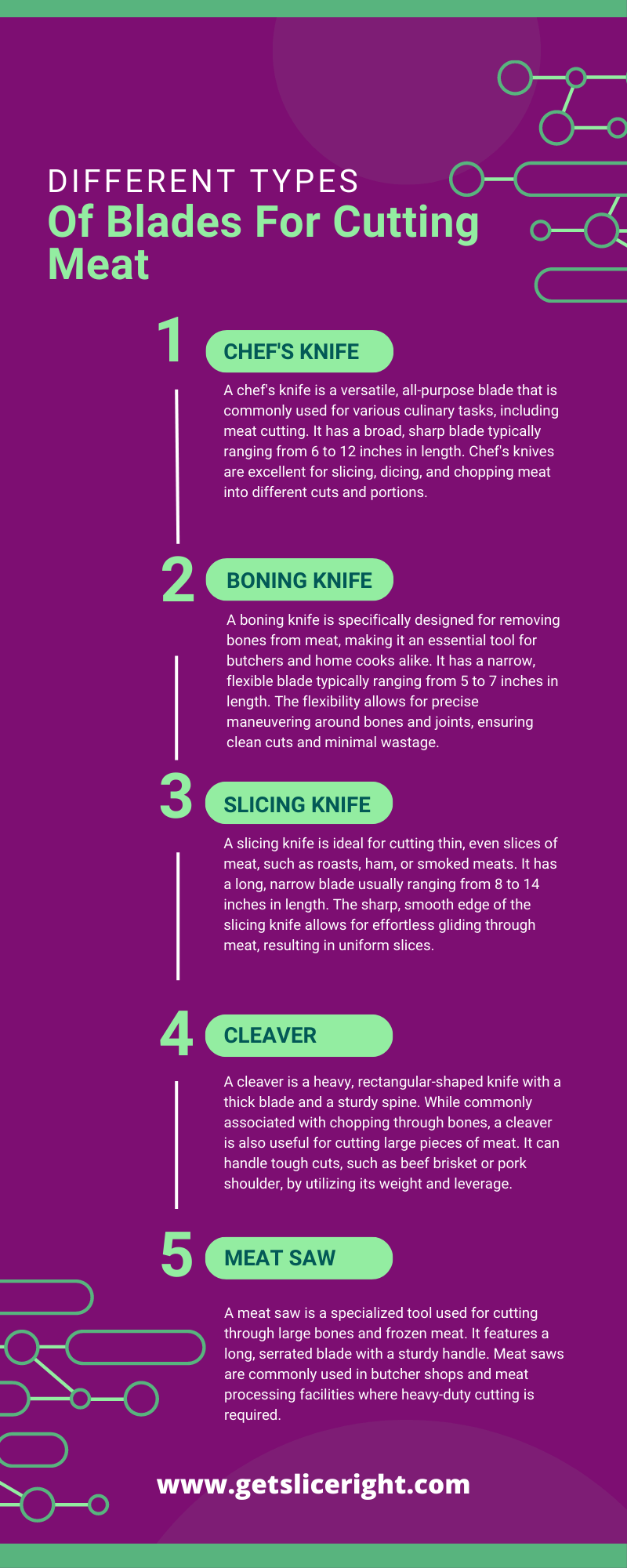
Using the right blade for cutting meat is crucial for achieving kitchen precision, efficiency, and safety. It ensures better meat quality and presentation, and it helps prolong the lifespan of your knives. To make the most of your culinary skills, it’s essential to invest in a range of high-quality knives suitable for different meat-cutting tasks and understand the importance of using the correct blade for each task.

Mario Batali is a renowned author, food enthusiast, and passionate chef who has dedicated his life to exploring the world of culinary arts. With a love for sharing his knowledge and experiences, Mario has become a prominent figure in the food blogging community, inspiring countless readers with his creativity and expertise.
In addition to his culinary prowess, Mario Batali is also a talented writer with a flair for engaging storytelling. He launched his own food blog to share his recipes, cooking tips, and personal experiences in the kitchen. Over time, Mario’s blog gained a loyal following of food enthusiasts who appreciate his unique approach to cooking and his dedication to using only the finest ingredients.
Mario Batali’s passion for food and his commitment to sharing his knowledge with others have made him a true inspiration in the world of culinary arts. Through his blog, cookbooks, and public appearances, Mario continues to spread his love of food and the joy of cooking with his ever-growing fanbase.

